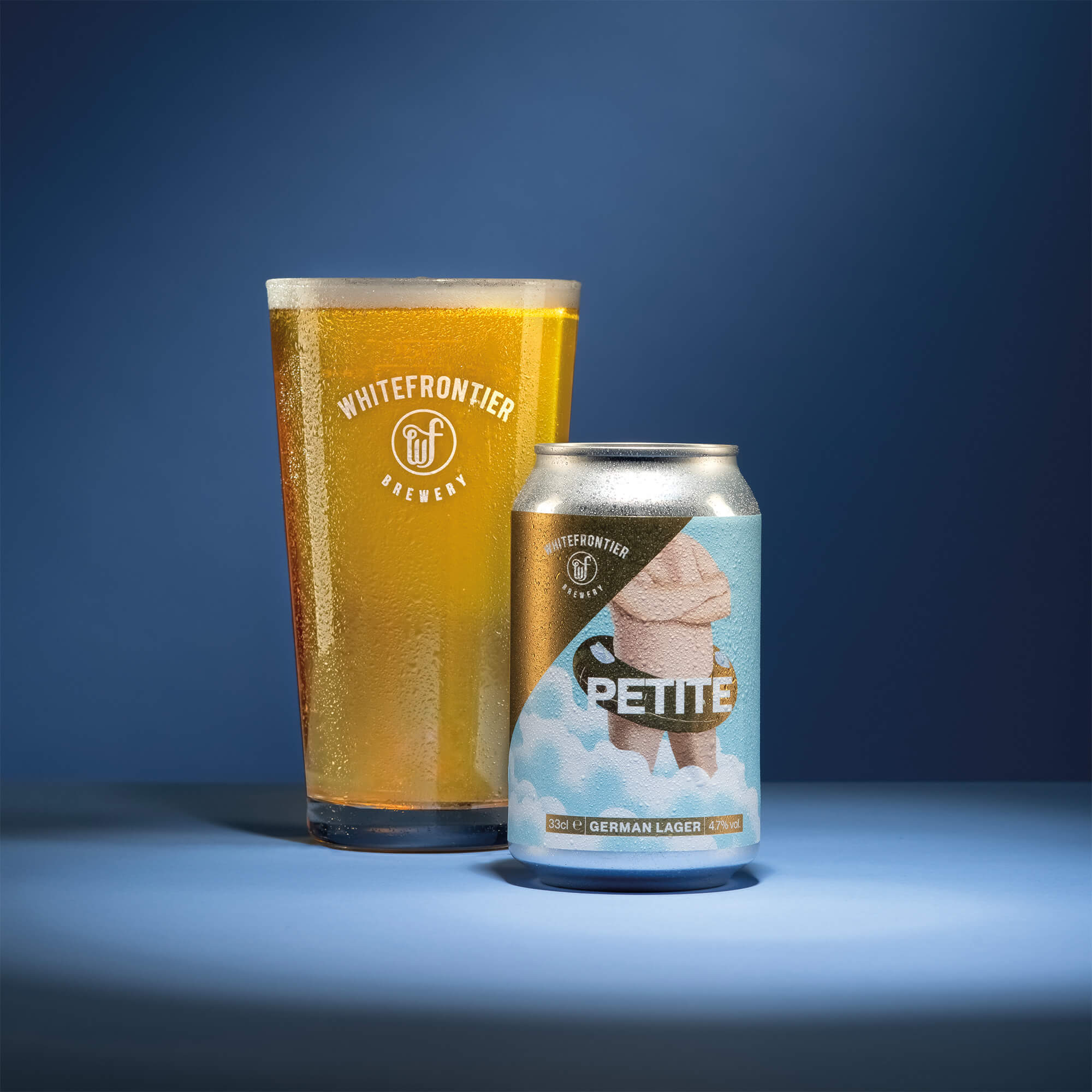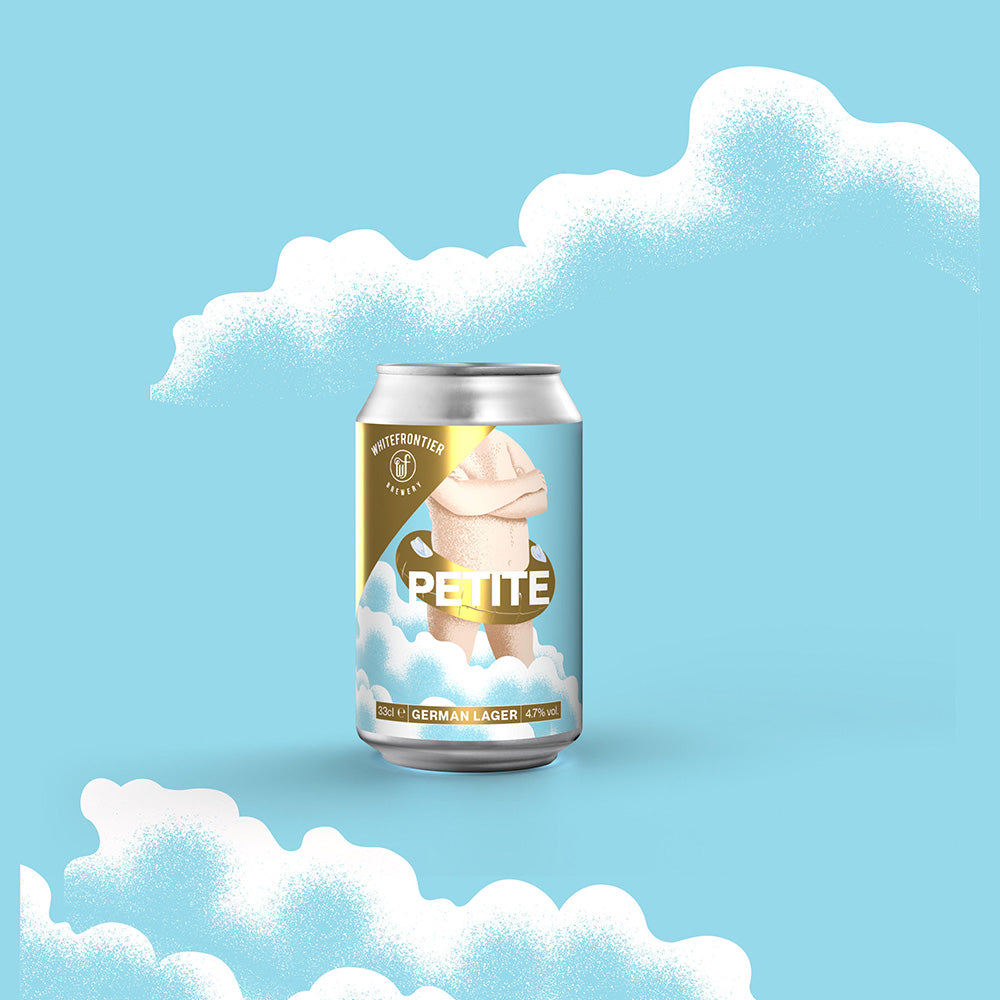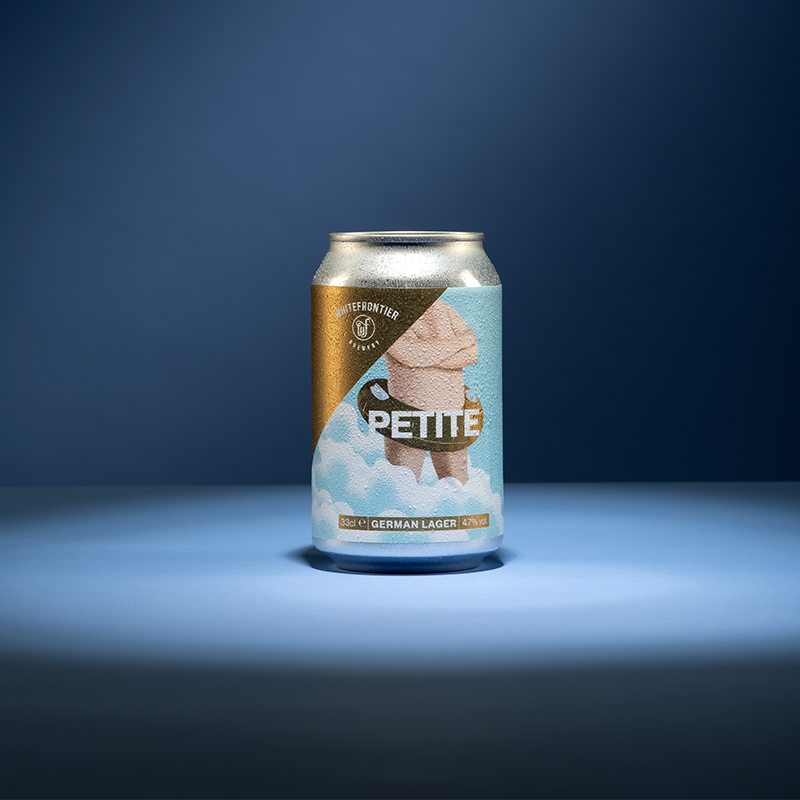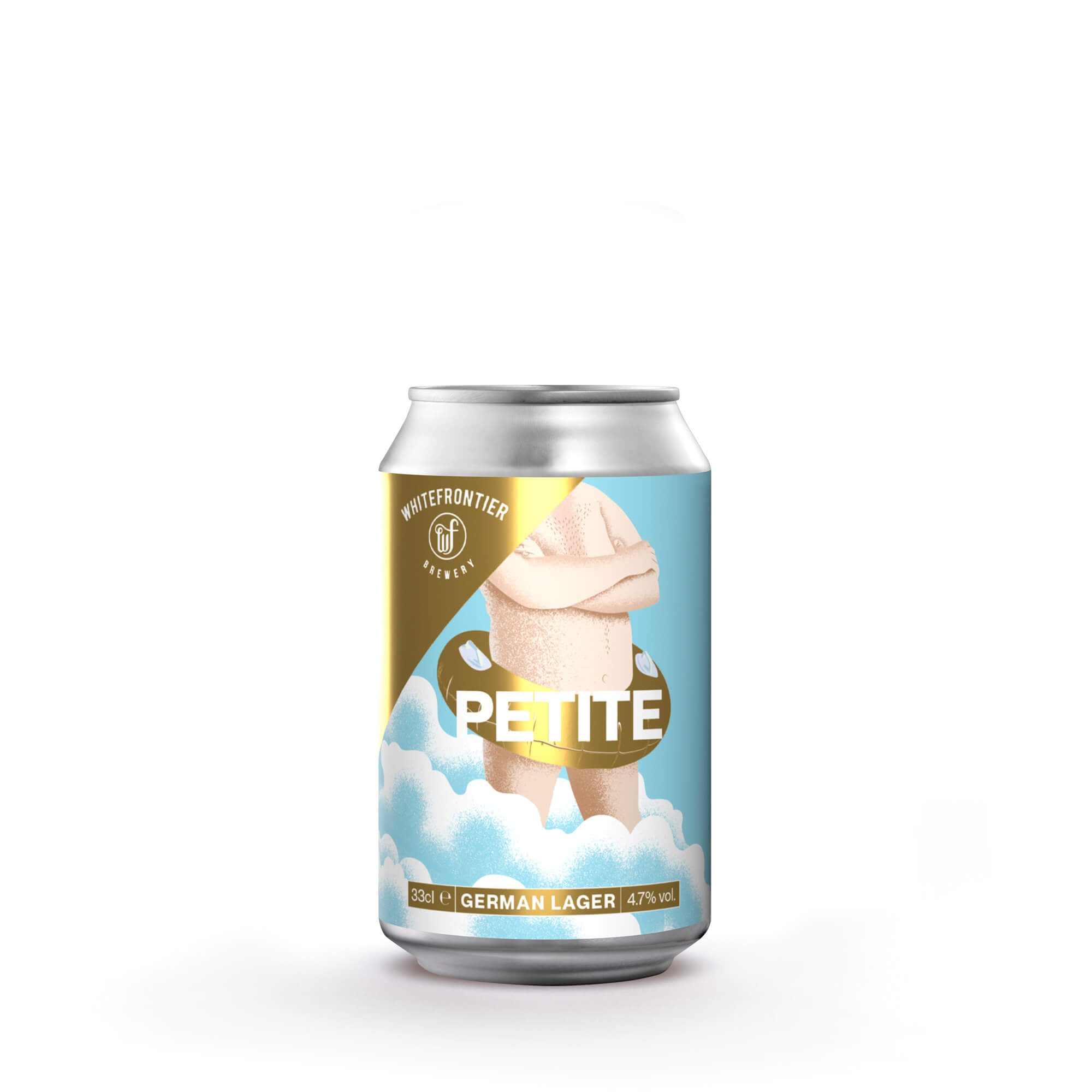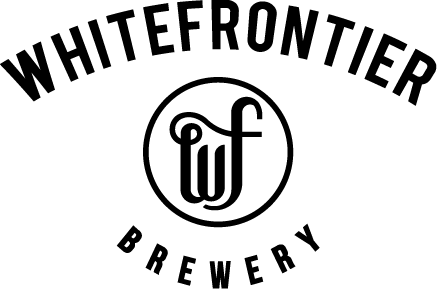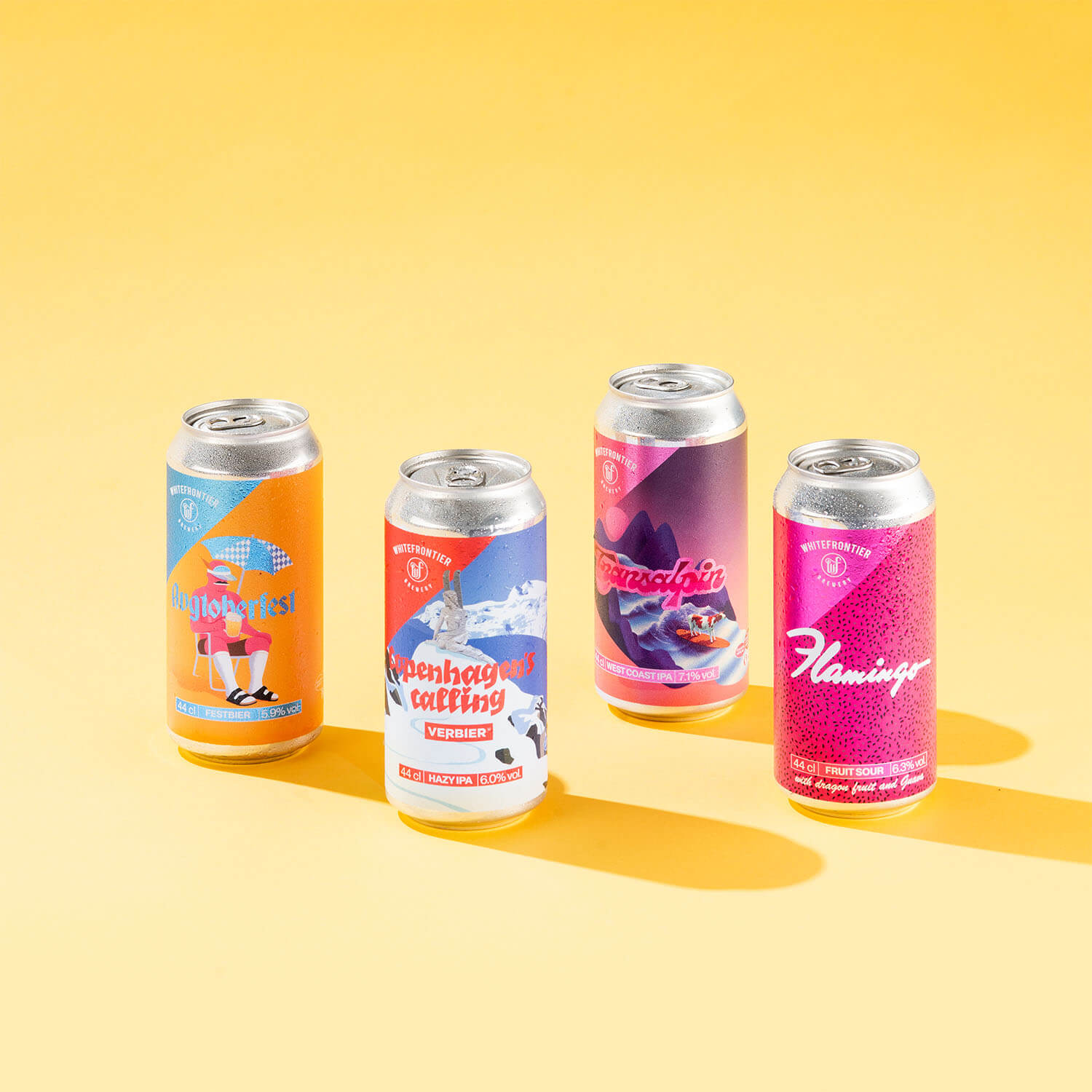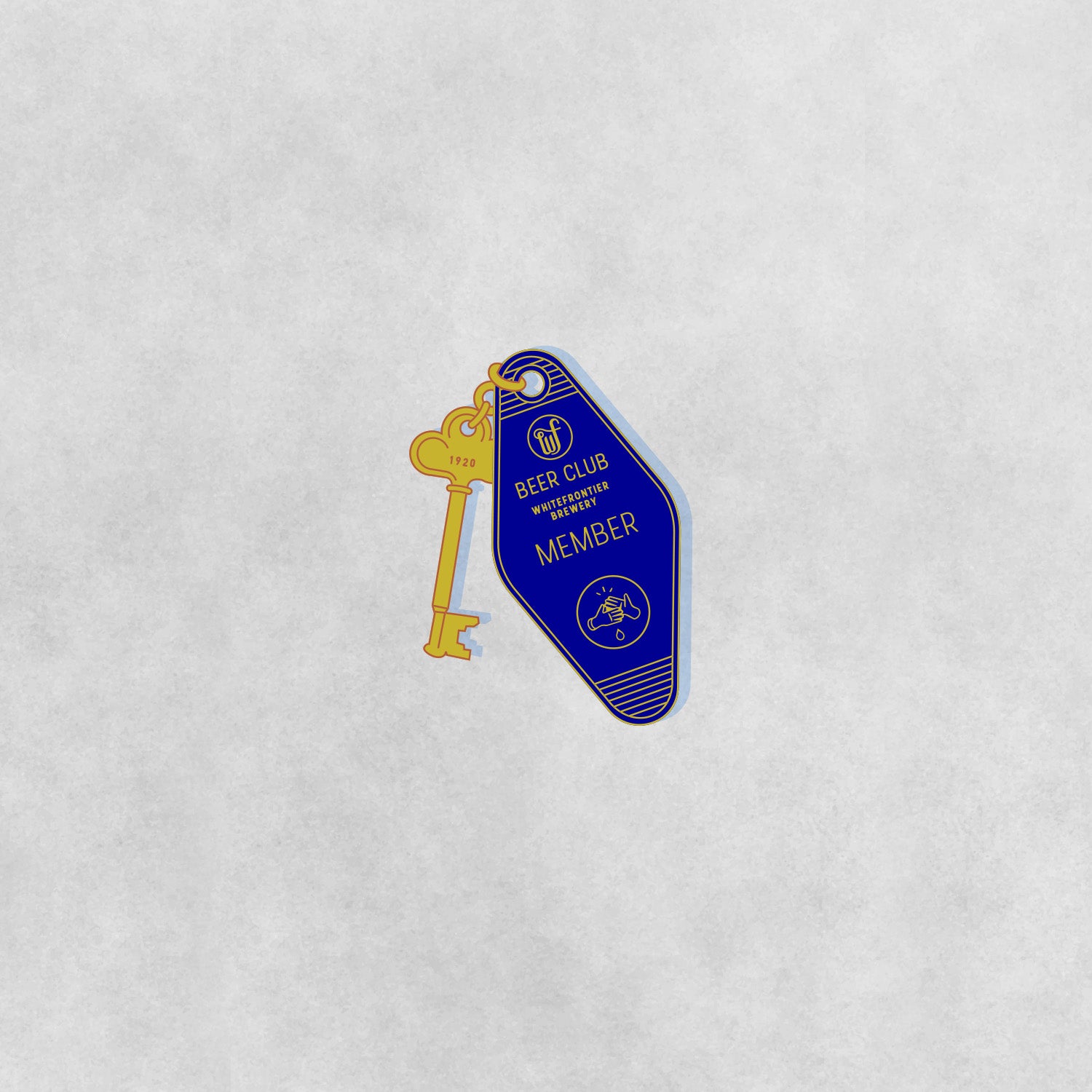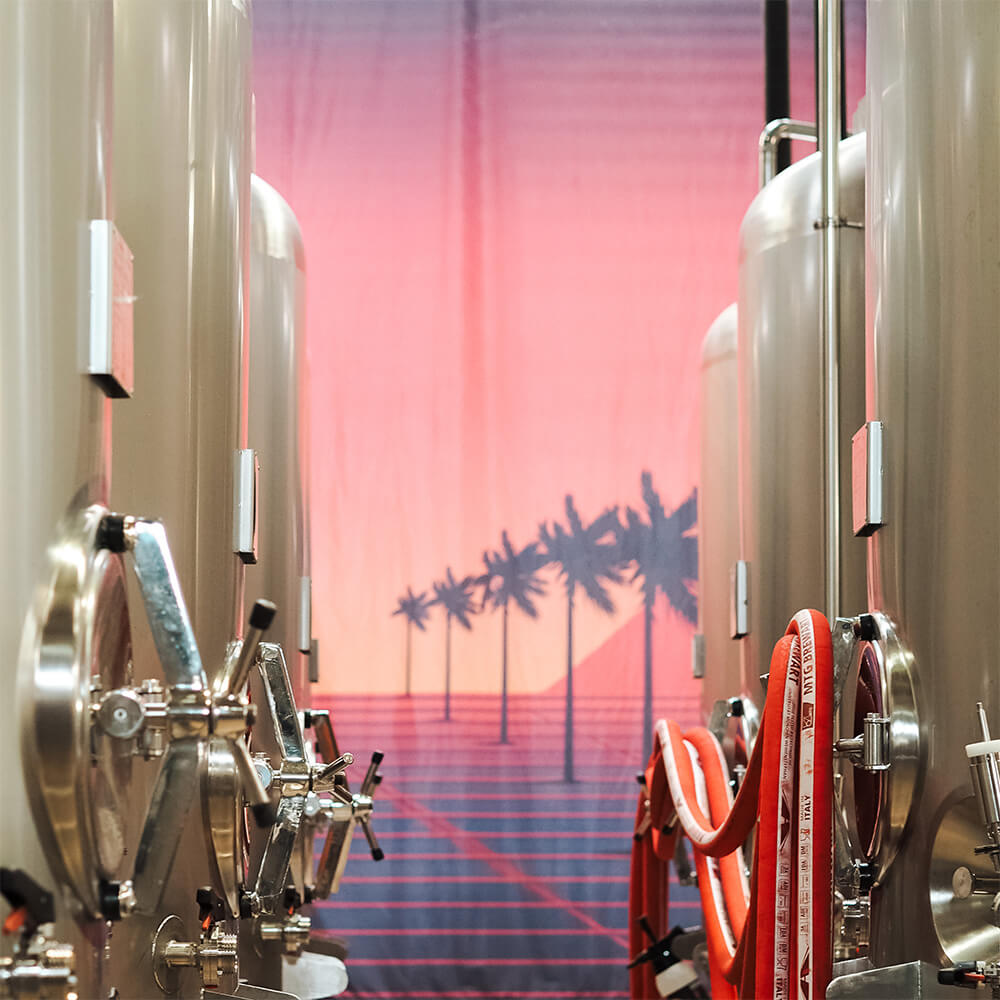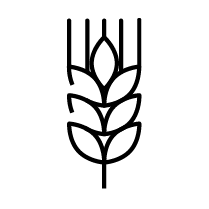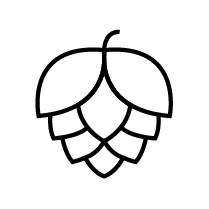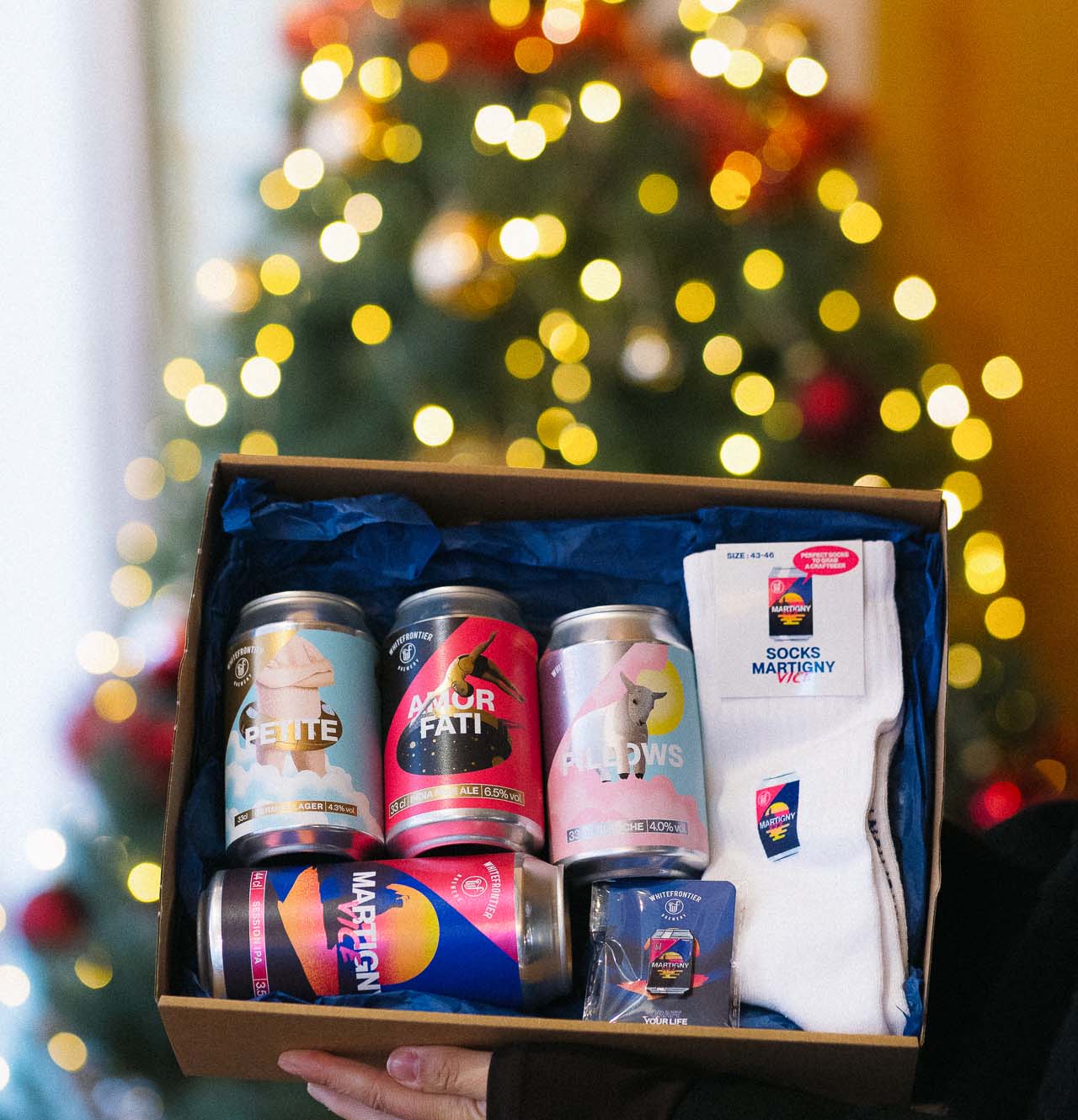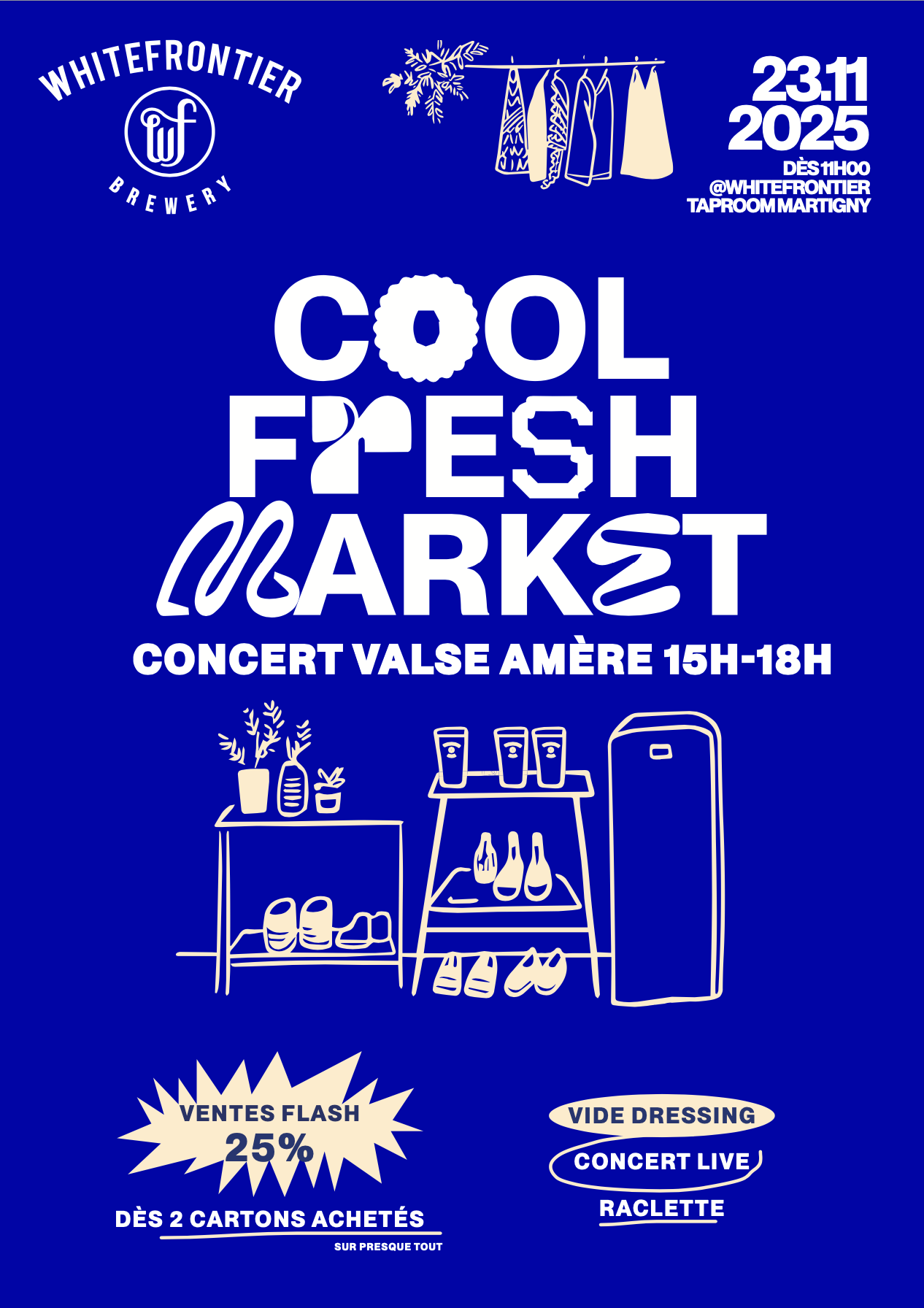- Abbey (beer)
Abbeys and monasteries played an important role in the development of beer in Belgium. The distinctive style of Abbey beers is due to their yeast strains which contain fruity esters and woody, spicy aromas. Sugar and spices are often added, as well, giving an easily recognisable profile.
- ABV
Alcohol by volume. Standard measure of the concentration of alcohol in an alcoholic beverage.
- Ale
The name for top fermented beer, as opposed to bottom fermented lager. These days, the term is mainly used for clear or amber beers.
- Altbier
German ale characterised by a long maturing period at cooler temperatures and lightly roasted malts. It’s not at all an “old” beer as the name might suggest, but rather uses an old fermentation method!
- Alpha acids
Present in hops, they give beer its bitter taste and contribute to its preservation.
- American Brown Ale
Malt-dominant style with toasted, caramelised and chocolate flavours. Medium hops and moderately bitter.
- American IPA
American version of IPA with a heavy use of aromatic hops, accentuating the fruity flavours. The character of American IPA is strengthened by dry hopping at the end of fermentation.
- American Pale Ale
Very hoppy, bitter beer. Less malty and less alcoholic than its big sister, the American IPA, it’s all the more refreshing.
- Aromas
Often added to brighten up the beer flavour. Think spices like coriander, fruits like cherry (e.g. sour Morello) and even honey. Beers are also increasingly aged in barrels to give a floral, spiced or vanilla finish.
- Astringency
Often confused with the bitter profile, astringency is a reaction of mucous membranes tensing in contact with certain molecules, such as tannins that activate salivation. In beer, astringency is found in roasted malts, hops and "unbalanced" water.
- Baltic Porter
Unlike porters and stouts, this is a bottom fermented beer. It shares similarities with the German Doppelbock, with notes of chocolate, liquorice, hazelnut and a higher alcohol content.
- Barley
Barley is the most used cereal in beer production. Barley selection is very rigorous when it comes to grain size, moisture content and protein content. Two-row spring barley is most often used (the name comes from the number of grain rows in each ear) over six-row barley (winter barley) because the protein content is lower, making it more suitable for use in breweries as it results in a less cloudy beer.
- Barley wine
Very malty ale, caramelised with an alcohol level higher than 10% and a hoppy finish that varies in dominance (as in English or American barley wine).
- Bacteria
In addition to yeast, certain bacteria can transform the sugars in the wort to produce new flavours in the beer acids. There are four particularly common types of bacteria: acetobacter (acetic acid), enterobacter, lactobacilli (lactic acid) and pediococcus.
- Beer
The term "beer" is reserved for beverages obtained by the alcoholic fermentation of a wort prepared from cereal malt, raw materials from cereals, edible sugars and hops, substances imparting bitterness from hops, and drinking water. The cereal malt makes up at least 50% of the weight of starchy or sugary materials used. The dry extract makes up at least 2% of the weight of the original must.
- Berliner Weisse
Berliner historical wheat beer, low in alcohol with a high lactic acidity. Lightly hopped and highly carbonated, it can taste like pastry!
- Bicarbonate
Very important for all-grain brewing, its concentration determines how alkaline the brew is. This ion determines the acidity of the mash. If the bicarbonate level is too low the mash will be acidic, especially with the use of dark malts which are more acidic. Conversely, if the level of bicarbonates is high, the efficiency will be lower.
- Biergarten (Beer Garden)
Big outdoor breweries that originated in Munich. Often found in parks, they have long wooden tables and benches. Everyone can bring their own food, but must buy their beer on site. Biergartens are very friendly spots for a chat and a beer, as soon as the good weather arrives.
- Bitter
Despite the original definition of the word, the bitterness of this English beer is tempered by its malt! A beer with low-alcohol content that’s not too sweet or sparkling, it's a drinkable option.
- Bitterness
One of the five basic flavour profiles. It isn’t so common in our diet, and generally not widely liked. It comes through more intensely when cold.
- Black IPA
A very hoppy beer with roasted malts for a very bitter, resinous finish.
- Blonde (Beer)
A golden coloured top fermented beer, between 6 and 7% ABV, often of Belgian origin. Malty notes and fruity esters give it an impression of sweetness.
- Bottle refermentation
A simple and inexpensive way to make a beer effervescent! This process is practiced on beers still containing live yeast, with sugar added just before bottling. Another round of fermentation will take place, with more alcohol and carbon dioxide created.
- Bottom fermentation
One of the three main beer fermentation families. The freshness required by the bottom fermentation process has the advantage of protecting the beer against bacteria and fungi. On the other hand, low yeasts produce less alcohol than high ones because their action is slowed down by the alcohol they produce.
- Brettanomyces
This family of wild yeast is used for seeding the Belgian styles gueuze and lambic, to which it brings a distinctive taste of leather, hay, rose or geranium.
- Brewing
The step where the brewer heats and mixes the mash so that the temperature remains homogeneous in the tank, accelerating natural chemical reactions such as the extraction of starch, proteins and enzymes contained in the malt.
- Brown (Beer)
Brown ale or Dubbel
- Brown Ale
cf American Brown Ale
- Bottle
Key container for beer packaging. Bottles have the advantage of being recyclable. Brown glass bottles are best, as they partially filter light rays, limiting the beer's degradation. You can also find bottles with swing-top stoppers or caps.
- Barrel
A wooden container in which beer can age and mature. The barrel may be new or it may have contained other alcoholic beverages, such as wine, whiskey or other beers. Fruit or spices can also be added to give the beer different tastes.
- Barrel Aged
A British term meaning the beer is aged in barrels. This type of ageing adds complementary flavours from the wood or alcohol previously kept in the barrel.
- Belgian Strong Ale
Strong beer of Belgian origin where a larger amount of malt is used than for a standard ale. A different yeast is also used, recognisable for its fruity esters, to extract more alcohol and carbon dioxide.
- Can
Up to the 1970s, the term “can” referred to glass beer bottles with swing-top stoppers. It now applies to aluminium or steel cans.
- Carbonation
The amount of CO² present in the beer. The fizzier a beer, the more simple sugars are converted into gas. The more bubbles, the less dense the beer.
- Cask
Alternative serving container of British origin. The principle of the cask is to serve “live” beer, kept in the pub as naturally as possible rather than in a bottle! The beer is therefore refermented directly in the cask. Cask beer is often served at a higher temperature and has a light effervescence.
- Cervoise (Barley Beer)
The ancestor of beer. Brewed from malted cereals and aromatic plants. Cervoise went on to become beer after the discovery and use of hops.
- Citrus
A flavour often present in beer due to aromatic hops, especially in IPAs.
- Complementarity (pairing)
Neither mirror nor contrast, but a sweet alchemy between beer and food. In other words, beer is used as a spice for the dish.
- Contrast (pairing)
Beer has the opposite taste characteristics to the dish. The flavours of the dish are radically different to those of the beer, and each enhances the other.
- Cream Ale
Very close to American lagers. Very pale in colour and often brewed with corn, this lightly hopped beer will be very refreshing.
- Decoction
Mashing technique that accentuates the beer's malty aromas. The decoction is based on caramelising the wort and cereals by boiling them. This process produces a beer with more body, and a darker colour with a toasted taste.
- DIPA (Double IPA)
Very aromatic hops, generally around citrus fruits, tropical fruits or pine! An intense resinous bitterness and warm alcoholic finish for this imperial version of the IPA.
- Doppelbock
A very malty, sweet, thick German brown lager. With distinctive notes of toffee and chocolate, it has a fortifying alcoholic content!
- Double (or dubbel)
Belgian strong brown ale. The term "double" refers to the amount of malt to be brewed, which was up to double the amount of that in a "single" beer. A strong, grainy, caramelised and often roasted beer.
- Dregs
The residue of cooked cereal that remains in the tank after the beer has been cooked and the wort has been racked.
- Dunkel
Bottom fermentation beer style, dark, with notes of toast, caramel and roasted fruit.
- EBC (European Brewery Convention)
or SRM among North Americans. The scale that classifies beers according to their colour. The darker the beer, the higher its EBC. The scale goes from 1 to 140.
- Eisbock
A rare beer. A doppelbock that has been frozen with some of the frozen water removed. As it melts, you get a much sweeter, more powerful alcoholic beverage.
- Enzymes
Naturally present in malt grains, their role is to cut the protein and starch chains of the malt to form shorter ones (maltose) which are more accessible to the yeasts for good fermentation.
- Esters
Aromatic molecules with a fruity taste produced by the yeast during fermentation.
-
beer with caramelised malts and earthy hops. Stronger than the classic English bitter, it has a round body and a dry, bitter finish.
- Farmhouse
A rustic, spicy, fruity beer of American origin as a response to Bières de Garde or Saison produced on Ardennes farms
- Faro
Lambic beer with candi sugar added. Produces lemony, caramelised, animal notes. A tangy finish.
- Fermentation
The brewing stage, during which the yeast added to the wort will consume simple sugars and produce alcohol, carbon dioxide and aromatic molecules.
- Filtration
At the end of the mashing process, the brewer filters the liquid part, wort, simply by passing it through the solid matter: that is to say, the residues of used malt (grain husks and insoluble particles) known as “spent grain”. The spent grain is then rinsed with hot water to extract a maximum of sugars still present and thus improve the yield.
- Fruited sour
Same recipe base as an acid beer. Berliner Weisse, Gose or Lambic, where the brewer adds whole fruit, purée or juice during fermentation.
- Germination
The grains germinate. They are spread out in layers, with a humidity level that's kept constant (45%) and a temperature alternating between 12-15°. Care must be taken to ventilate the layers of grain so that the germination temperature is controlled properly. This lasts about 6 days. We then obtain malt that’s green in colour (green malt).
- Golden Ale
Drinkable beer with slightly honeyed malts and low bitterness.
- Gose
Sour beer from the Leipzig region. Traditionally brewed with lactic acid, salt and coriander.
- Grisette
The mining cousin of the Wallonian Saison. Generally less alcoholic, but retains notes of wheat, crisp straw and noble herbaceous hops for an abundant, pungent sparkling finish!
- Gruit
Beer traditionally brewed without hops, instead using herbs or aromatic plants
- Gueuze
Beer crafted from a blend of young and old lambic. Bears a clear acid profile reminiscent of lemon and green apple. Notes of wet hay and old barn. Very effervescent.
- Helles
Very sweet traditional Bavarian lager, has a cereal quality with notes of fresh bread and noble hops such as Tettnang or Hallertau.
- Hopping
The action of incorporating hops into the boiling vessel when brewing beer. This will give the beer bitterness and improve the hops’ preservative properties. There is also dry (or cold) hopping, which is done during the fermentation of IPAs and extracts the essential oils and aromatic tones from the hops.
- Hops
Entered into the composition of beer at the end of the Middle Ages and play an important role with its antioxidant and aromatic properties. The alpha and beta acids released from hops during brewing give very varied taste results depending on their proportion in the hops. As such, each hop variety gives the beer a distinctive flavour (tropical fruits, citrus fruits, herbaceous or floral notes, etc.). Hops are also responsible for the bitterness in beer!
- IBU (International Bitterness Unit)
Measurement for evaluating the bitterness of a beer. The higher the IBU value, the more bitter the beer. The scale goes from 1 to 150, although a beer will rarely exceeds 90 IBU and, beyond this value, the palate can’t detect any more bitterness!
- Imperial stout
Warm alcoholic black beer with a round licorice body. In the mouth, notes of coffee, chocolate, dried and black fruits give a pronounced bitterness.
- India Pale Ale (IPA)
Legend has it that it was the English settlers in the 18th century who added many more hops to their beers to last the journey to India!
- Inoculation
The stage where the brewer adds yeast to the wort to begin fermentation. Liquid yeast may be used, or dry yeast that has been rehydrated. For spontaneously fermented beer, the brewer adds nothing and leaves the process to nature.
- Keg
Establishments serving large quantities of pressurised beer keep it in stainless steel kegs, which replaced wooden kegs from the 1920s. There are many advantages: price, sturdiness, infinite recycling... There are also alternative disposable kegs for exporting, such as KeyKeg and Dolium.
- Kellerbier
Historically, this beer is served in the same the barrel, unfiltered and naturally carbonated Originally from northern Bavaria, this lager has an appealing herbaceous finish and subtle cereal notes.
- Kilning
Another step in the malting process which consists of drying the malt to stop germination. This is followed by a rapid rise in temperature to give the malt new colours and flavours.
- Kölsch
Top fermented beer brewed at a low temperature! The term “Kölsch” is a controlled designation of origin (AOC). Aromatically speaking, its slightly honeyed cereal notes harmonise perfectly with herbaceous hops and a pronounced sparkling profile.
- Kriek
Lambic with Morello or sour cherries, this beer is a speciality from Pajottenland, near Brussels. Pronounced notes of cherry mix with the hay/barn finish, typical of lambic for a stripping acid finish!
- Lactobacilli
Lactic acid bacteria that add acidity to beer. These bacteria are relatively sweet and reminiscent of natural yoghurt or whey. They give the product a fresher finish and increase its drinkability.
- Lager
Term used to name bottom fermented beers. Originally from Bavaria or Bohemia, these are generally light, thirst-quenching beers. They are brewed at a relatively cold temperature (between 5-10°C) and ferment for longer (around 6 weeks).
- Lambic
Ancestral beer from the Senne valley in western Brussels. Made with a traditional spontaneous fermentation process and very often brewed in a coolship. The wild yeasts and bacteria present in the brewery are at the origin of the beer's fermentation, and give it its typical hay, cheese or even equine notes, as well as its very lively acidity.
- Malt
Barley malt is the main cereal use in brewing. Roasted or toasted malts are added in small quantities (less than 20%). They add coffee and caramel notes, and contribute to darkening the colour of the beer. Other cereals like rye, oats and wheat may also be used, the latter being used in white beer recipes.
- Mash
Contents of the fermentation tank. Liquid solution with a high sugar content obtained by mixing crushed malt with hot water.
- Mashing
Mashing is the first stage of brewing, which consists of soaking and stirring the crushed malt in hot water to extract the starch contained in the malt. The crushed malt and water mixture is called mash. Why mashing? Because the water and malt mixture gives rise to a porridge-like appearance.
- Milk stout
Stout brewed with lactose, highly reminiscent of a liquid chocolate cake with sweet notes of chocolate, coffee and caramel.
- Milkshake IPA
IPA brewed with lactose for a tropical dessert feel! A fairly sweet finish to perfectly counterbalance the bitterness of the IPA and make it a very accessible beer for those who aren't into overly hoppy beers.
- New England IPA (NEIPA)
IPA brewed with New England yeasts that give the beer a densier, murkier quality. Also less bitterness felt than in a classic IPA, allowing brewers to "load" even more hops for a significantly juicy finish!
- Oats
Added to the brew in the form of flakes or malt, oats add sweetness and a creamy finish.
- Old Brown (or Flanders Brown/Oude Bruin)
Sweeter than its cousin, Rouge des Flandres, Old Brown is no longer necessarily kept in barrels. But the beer is still rustic, with notes of plum and black grape, as well as unique notes of balsamic vinegar.
- Oxidation
Carries the taste of wet cardboard. Originally due to overexposure to oxygen, the solutions for having no (or little) oxidation are to limit the exposure of the wort to air after fermentation and/or to wait less time before serving the beer!
- Pale Ale
British term for a top fermented dark lager (as opposed to conventional lagers)
- a light, drinkable beer.
- pH
It’s important to control the pH of your water for optimal saccharification. If the pH is too high, the malt taste is less pronounced. Too low, and the beer will have less body, for example. The water pH is also important for the beer’s bitterness level and the work the yeast does.
- Phenols
Aromatic molecules with a spicy taste produced by yeast during fermentation.
- Pilsner
Widely distributed, bottom fermented beer style popular in Germany and Eastern Europe. Its name comes from the city of Pilsen and its famous Pilsner Urquel. They are generally light, more or less bitter beers with pronounced cereal notes.
- Porter
English style, a cousin of stout, black in colour with roasted notes of coffee, cocoa, toast and caramel. Compared to stout, it can be less rounded and less alcoholic, probably due to its absence of roasted, unmalted barley.
- Protein
Naturally present in cereals
- a thick layer that the malting process will break down to release starch.
- Red ale (or Irish Red Ale)
Amber red beer of Irish origin. Toasted and caramelised cereal notes with a lot of residual sugar and low bitterness.
- Resonance (pairing)
The beer reflects the flavour profiles in the dish. There is a similarity between the flavours in the dish and in the beer. This amplifies the flavours and nuances of each element.
- Retronasal olfaction
When tasting a beer, retronasal olfaction consists of exhaling through the nose once you have swallowed a sip of beer. The aromas travel up towards the nasal cavities before being analysed by the nasal hairs. There is therefore a second experience of the beer by smell.
- Rouge des Flandres
A cousin of the Brune des Flandres, this red ale has a clearer acidity. A very vinegary, woody, tannic beer, it is barrel aged with lactobacilli added to create its typical aromatic profile.
- Saccharomyces
Name of traditional beer yeast. There are two types of Saccharomyces: Cerevisiae for top fermenting and Uvarum for bottom fermenting.
- Saison
As the name (meaning “season”) suggests, this beer was intended to keep workers “watered” during the agricultural season in Wallonia in the 19th century. It has a farm-like character thanks to a typical yeast and notable hopping. The finish is bitter and dry.
- Schwarzbier
To put it in layman's terms, you could say that Schwarzbier is a black Pilsner. A dry, drinkable beer with roasted malt and notes of almost burnt bread!
- Scotch ale (and Wee Heavy)
Originally, this term referred to a strong beer intended for export and brewed in the 18th century in Scotland. In the recipe, these beers undergo a prolonged boiling phase, which concentrates and caramelises the wort. Scotch ale is therefore darker, sweeter and has an alcohol content of around 8%. Nothing to do with Scottish whiskey!
- Smoked Porter
Porter containing a certain quantity of smoked malt. Notes of dark chocolate and roasted cereal for a smoky finish on peat or wood.
- Sour
Beer marked by acetic or lactic acidity. In general, brewers will add lactic acid bacteria to obtain greater acidity. They can also ferment the beer spontaneously or age it in barrels to obtain a sharper acidity.
- Starch
Starch is a complex carbohydrate and is naturally present in cereals. During brewing, the starch will be broken down into simple sugars, ready for fermenting afterwards.
- Steeping (or soaking)
The first stage of malting. The grain is bathed in lukewarm water and remains there until it doubles in volume.
- Storage
The "green beer" is transferred to a tank to undergo fermentation for a few weeks at a lower temperature. This allows the beer to mature, gives the yeast time to finish its work, clarifies the beer, and saturates it with carbon dioxide and solid residues for decanting.
- Stout
A stout is a top fermented beer brewed from a wort with a distinctive highly roasted grain content (malt and barley). The presence of these well-roasted grains in the recipe gives the beer its dark colour, as well as coffee or cocoa notes.
- Summer ale
To keep things simple, this is the opposite of a Christmas beer. It’s not a specific style, but it’s refreshing, has a low alcohol content, and is often crafted with hops with fruity notes. Above all, it’s especially drunk in summer!
- Toasted
Often associated with amber beers, this is malt that has undergone intense kilning until it is grilled or toasted. Used in small quantities in brewing, it gives beer a toasted caramel taste.
- Tripel
A dry, effervescent body enhanced by fruity esters and a warm alcoholic finish. The term tripel absolutely does not refer to a triple fermentation, but rather a triple dose of malt, following the logic of singel and dubbel.
- Top fermentation
Fermentation between 15 and 25°C, producing fruity and spicy aromas for beers with more body that are generally higher in alcohol. Referred to as ale in the English speaking world.
- Weißbier
Weizenbier, Weißbier or Wheat Beer is a top fermented white beer, brewed mainly in Bavaria in the south of Germany. Containing between 5-6% alcohol, Weißbier has a distinctive, slightly bitter taste and high gas content. It also typically contains banana and clove notes. It is called Weißbier (“white beer”) especially in Bavaria because of the colour on the surface after fermentation. The term is reinforced by the phonetic proximity of weiß (white) and Weizen (wheat). It comes in three varieties: Kristallweizen(bier), limpid blonde
- Hefeweizenbier, light in colour but cloudy
- Dunkelweizenbier, brown in colour.
- Wheat
Used as the main cereal for German wheat beer, for example. Or, as a secondary cereal, common wheat gives beer acidity and freshness.
- Wheat (beer)
Wheat ale, Witte or Weizen
- Wheat beer (or American wheat beer)
Slight notes of wheat and fresh bread are counterbalanced with a somewhat pronounced hoppy finish. This beer is an American interpretation of German Weizen without the banana and clove esters.
- Wheat wine
Quite simply a barley wine where the cereal and main character come from wheat!
- Wild ale
A beer with a “wild” side from the addition of brettanomyces. A very dry beer with earthy, equine and pine notes. The best example is still Belgium’s Orval!
- Witbier
Top fermented wheat beer of Belgian origin. A refreshing beer brewed with 50% raw wheat and the addition of coriander and orange zest.
- Yeast:The beer labourer. Transforms wort into beer through the fermentation process. From the time of Louis Pasteur, extensive research has resulted in multiple strains of yeast. Some are chosen for their aromatic profile
- others to obtain a higher alcohol content, for example.
- Yeast culture
Technique that consists of developing and duplicating yeasts with live yeasts contained in the bottom of a bottle, for example. More and more brewers cultivate and duplicate their own yeasts in the lab to create their own identity and unique beers!
